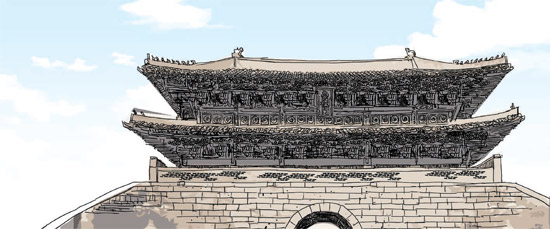When greed trumps the spirit of tradition

However, the history of this tradition is surprisingly short. Most of the royal protocols were created between 1877, when Queen Victoria became the Empress of India, and World War I in 1914. The carriage played a key role in the entrance, but in 1903 there used to be 3,623 horse-drawn carriage buses and 13 motor buses. Ten years later, only 142 carriages were left, while the number of motor buses increased to 3,522. So the royal carriage, which had been commonplace, now has “romantic splendor.” (From “The Invention of Tradition,” edited by Eric Hobsbawm and T.O. Ranger.)
If you ask why tradition is so important, there is no clear answer. In fact, it does not feed us. But we can’t live with food only. Accumulated wisdom from generation after generation and heritage and cultural pride have a priceless value. So countries want to have tradition, and even go so far as to invent it. While the United Kingdom boasts its 150-year-old traditions, we don’t even cherish our precious ones, letting a 600-year-old cultural asset be destroyed in a fire and failing to properly restore it. I am talking about the Sungnyemun. The pillars are cracked, the dancheong paintwork is peeling and the wooden floor is coming off.
There has been a testimony that “only half of the budget and time from the reconstruction in 1962 was invested for the latest restoration.” About 2.4 billion won ($2.2 million) was spent on PR, while only 234 million won was used for lumber. It was a mistake to schedule the construction timeline, including works on the side walls, for five years. The works were rushed in order for it to be completed during the Lee Myung-bak administration.
The Seoul annex of the National Museum of Modern Art, opening Nov. 13, had similar troubles. When the construction plan was announced in January 2009, the design contest was held before the excavation and ground survey were completed. A high-ranking official at the Ministry of Culture and Tourism rushed the project, demanding completion by Dec. 12, 2012.
It was an irrational plan to please the president. The construction began in June 2011, and four people died and 25 were injured in a fire at the construction site in August 2012. Is the disaster unrelated to the bureaucratic decision to ignore the experts’ advice that the construction requires at least four years?
At the Busan Architecture Festival in October, the “Walking Barcelona with Gaudi” exhibition displayed photos of the Sagrada Familia, which was designed by Antonio Gaudi and has been under construction for 130 years. That may be too long, but is it impossible to have a proper reconstruction project for a cultural heritage site that lasts 30 years?
*The author is an editorial writer of the JoongAng Ilbo.
By NOH JAE-HYUN










with the Korea JoongAng Daily
To write comments, please log in to one of the accounts.
Standards Board Policy (0/250자)